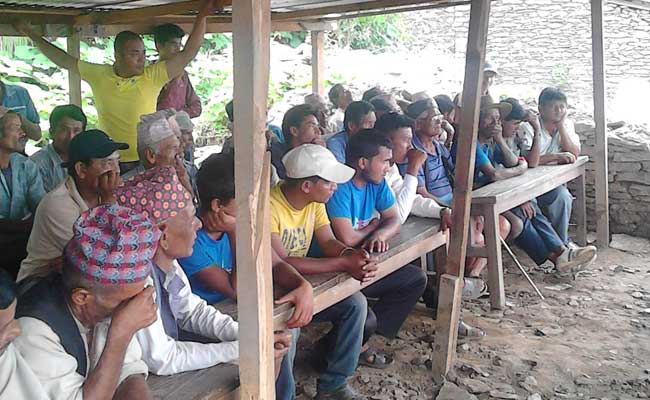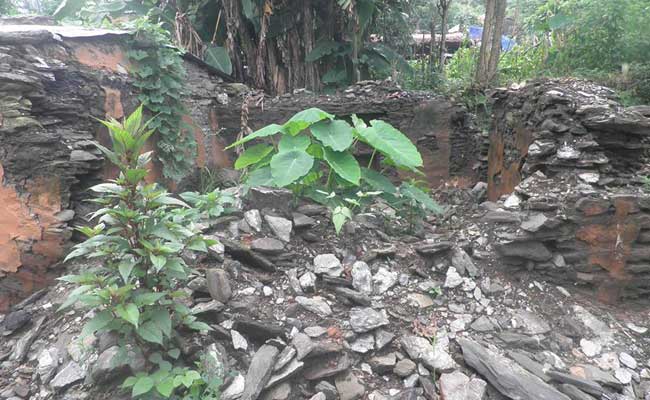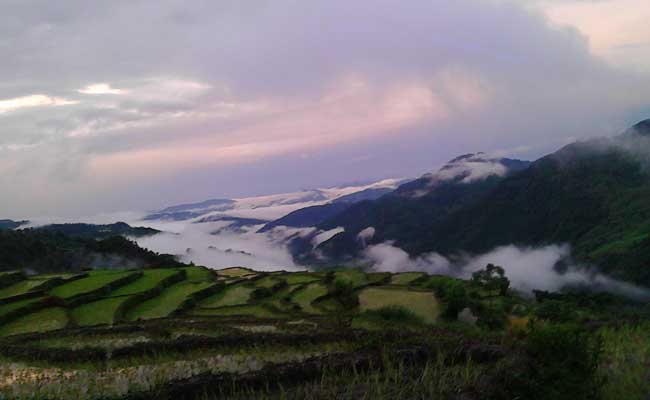Himalaya Water Pipe Project
1. Introduction
As we all know a powerful earthquake of 7.8 magnitudes hit Nepal on the 25th of April 2015 causing hundreds of thousands of people becoming homeless with entire villages flattened, across many districts of the country. Around 16 million Nepalese still defecate in the open, and 6.5 million of them do not have access to clean water. Many village development committees in the country are still waiting for funds to meet their residents’ water and sanitation needs.

There are many places where the government not being able to help for the water pipe. However, our project is focused on the earthquake area Baseri Village Development Committee, Dhading District, Bagmati Zone in Nepal. We are making our own efforts to help people increase their production because lost of the water spring after the earthquake, and we have been visiting such places on a regular basis with our team.
After the earthquake, many sources of water are gone. Even in the monsoon season, the spring is stopped. Water is essential to bring forth the potential of the land and to enable improved varieties of both plants and animals to make full use of other yield-enhancing production factors. After the quake, raising productivity, Himalaya water pipe project helps to ensure better production, both for direct consumption and for commercial disposal, so enhancing the generation of necessary economic surpluses for uplifting rural economies and supporting the earthquake victim.

Baseri is one of the rural earthquake disaster villages, situated in north 165 km from Kathmandu, between the east Phulkharka VDC, South Budhathum VDC of Dhading district and on the west BudiGandaki River, north Manbu VDC of Gorkha district. The main sources of income of the village are agriculture, army, police, tourism sector and remittances from migrant workers. Beasri is divided in two parts, upper parts; the upper part above 2000 m altitude where it is always chilly whereas the lower part is flat with rice terraces because of the warm temperatures that prevail there.
Before the Gorkha earthquake in 2015, during the monsoon season the water come on Purple Khola people take benefit for rice plantation and organic vegetable production. More than 150 hector lands are affected. The 7.8 magnitude earthquakes last spring. Himalaya Water pipe project area is in ward no. 8, of Baseri. Our planning is bringing water from Budikhola to People Khola which distance 936 m. To prevent this from happening, we are working hard to buy 936 m water pipe with build necessary intakes. Local people directly involve putting the pipe.

2. Objective
- Ensure water supply for a secure and economically viable agriculture
- Relief for victim people and increase agricultural production
- Develop new approach in agricultural
3. Budget
To reach the Baseri village, there is seasonable road, so it takes 6/7 hours drive from Dhading Besi. It is 980 m altitude from sea level, not possible to buy the raw materials there. Regular road reach to Aarughat Bazar which is 3 to 4 hours walking before the project area. Porters cost per kg rs 5-7 from Aarkhet. The cost for skilled workers per day ranges from basic rs. 800 to 1500 and low skilled workers from rs.300 to rs.600 per person.
According to our survey and our design, the overall cost is calculated in the following manner:
- Pipe 936 meters (6/7 Inch DIA and 6 m long per piece total 156 pic.) rs. 6,406 per Rs. 999,336.00
- Intakes/Joins 7 place rs. 1550 per - rs. 10,850.00
- Cement 300KG rs. 25 per kg rs. - rs. 7,500.00
- Skill workers (rs. 600 to rs. 1500 per day) - rs. 36,700.00
- Transportation by Driving rs. 73,000.00
- Transportation for Porters - rs. 170,500.00
(One pipe two people 156 x2 x Rs. 500 = 165,000 and others 11 porters for others things x rs. 500 = rs.5,500)
- Others (stone/conceit) - rs. 10,000.00
Total cost rs. 13,07,836.00 or in US$ 12,948.00
Note: If possible to use the seasonable road, porters transportation cost’s 70 percent less.
4. Resource Mobilization, Monitoring & Evaluation
We do not have any agent and there are no offices or staffing costs (apart from the porters and builders) as we are working as volunteers. Your donations will directly go to those needy areas. We will update you on what we will have achieved. We make one management working committee all over beneficial farmers, which work directly. The project is running by working committee. We collect the fund transfer, the management working committee. Our team Monitoring and evaluation is a process that helps to improve performance and achieving results. Its goal is to improve current and future management of outputs, outcomes and impact. So our team will be doing monitoring and update the project news.
5. Conclusion
The people, who have land but not plantation, as one of the results of the recent earthquake, are usually people who have lost their house, no income source, and they do not have the means to build water supply soon. That means directly or indirect there are huge impacts on their income source and the need to build water supply is pressing.
Finding solutions to this problem is very urgent. However, it is huge challenges to collect the necessary funds to buy pipe and also the problem for transportation in monsoon season.
The farmers are happy to work to put pipe themselves. There are no able to buy pipe, hire skill workers, so they need our assistance.
For Details information or Donation Contact
Suman Prasad Neupane
Co-coordinator
Himalaya Water Pipe Project
Baseri-8, Dhading, Nepal,
Tel. No. +977 9841 306857
Email : spneupane@hotmail.com
